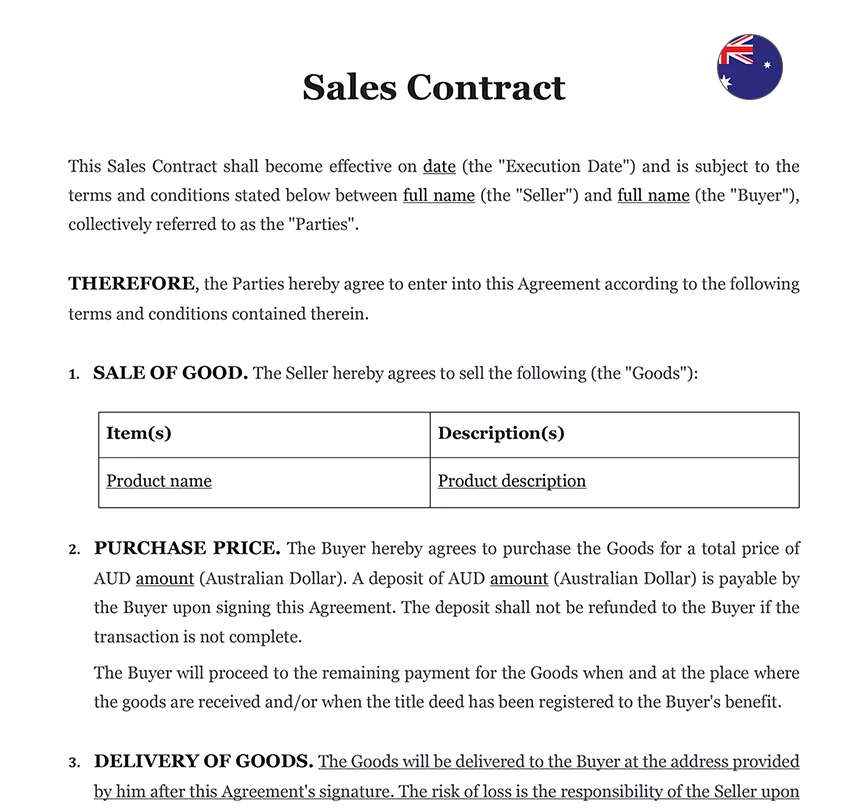The Importance of Purchase Agreements
A Purchase Agreement is a vital legal document that outlines the terms and conditions of a sale between a buyer and a seller. This guide highlights the significance of drafting effective purchase agreements in Australia, ensuring both parties’ interests are protected and the transaction proceeds smoothly.
Understanding Purchase Agreements
Purchase Agreements are essential for defining the terms of a sale and protecting both parties.
1. Definition: A Purchase Agreement is a legally binding agreement that specifies the details of a sale transaction, including the price, terms, and conditions.
2. Types: There are various types of Purchase Agreements, such as real estate purchase agreements, vehicle purchase contracts, and business asset purchase contracts.
3. Legal Framework: The enforceability of purchase contracts in Australia depends on proper drafting and adherence to legal standards.
Key Elements of a Purchase Agreement
Including essential elements in a Purchase Agreement ensures clarity and legal protection.
1. Parties Involved: Clearly identify the buyer and the seller.
2. Description of Goods or Services: Provide a detailed description of the goods or services being sold.
3. Purchase Price: Specify the purchase price and payment terms.
4. Warranties and Representations: Outline any warranties or representations made by the seller.
5. Conditions of Sale: Define any conditions that must be met for the sale to be completed.
Payment Terms
Clearly defining payment terms helps avoid disputes and ensures smooth transactions.
1. Payment Schedule: Specify the payment schedule, including any deposits or installment payments.
2. Payment Methods: Define acceptable payment methods (e.g., cash, bank transfer, financing).
3. Late Payments: Include provisions for late payments and any applicable penalties.
4. Refunds and Returns: Outline the conditions for refunds or returns, if applicable.
Delivery and Transfer of Ownership
Addressing delivery and ownership transfer details ensures both parties understand their obligations..
| ➤ Delivery Date: Specify the expected delivery date or timeline. |
| ➤ Delivery Method: Define the delivery method and any associated costs. |
| ➤ Risk of Loss: Determine when the risk of loss transfers from the seller to the buyer. |
| ➤ Title Transfer: Outline the conditions for transferring ownership or title to the buyer. |











